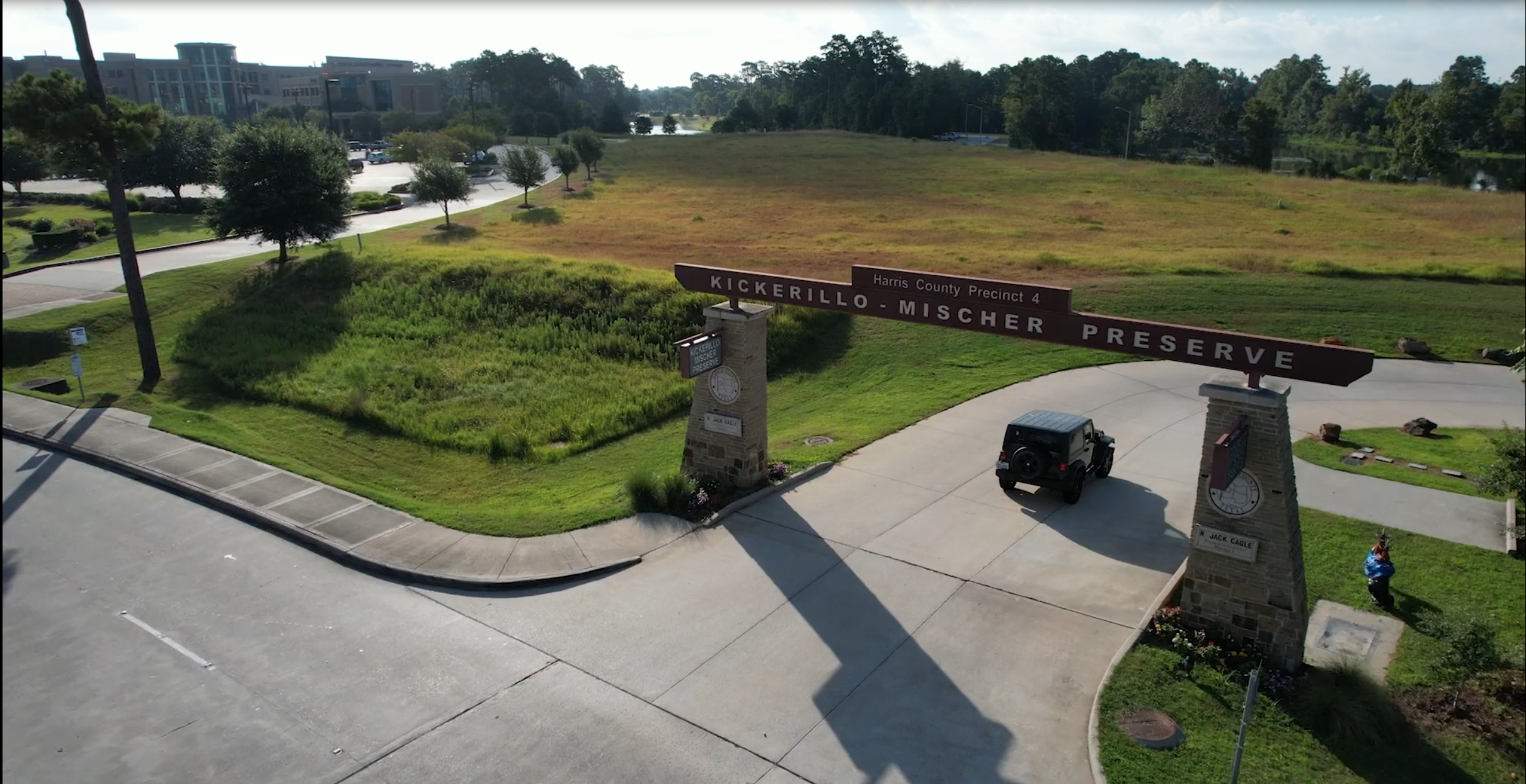
VideoEnvy has spent a decade partnering with Houston nonprofits as well as big-name educational and medical organizations that make an impact in their respective fields. One project we are particularly proud of is the three-part video series we produced for Harris County Precinct 4. The videos highlight the Kickerillo-Mischer Preserve, a local park off Highway 249 in north Harris county. (The park was recently redistricted and now falls under Precinct 3.) The three videos include an overview of the park’s history, benefits, features, and programs, an in-depth look at the park’s programs, and a short social promo. We’ll take you through the process and tricks we used to produce these high-quality and professional videos for our local precinct.
Pre-production: Like any project we produce for a client, we start by having a pre-production phone call discussing two big questions: what is the intended purpose of the video and where will the video be used? In this case, it would be featured on the precinct’s website to inform others about the park and attract more engagement within the local community. From there, we decided on three specific people for on-camera interviews: a Harris County Precinct 4 representative, a Cypress Creek Flood Control representative, and a community partner—all subject matter experts. Our producer then creates interview questions designed to prompt these interviewees who, through these guided questions, will narrate the story of Kickerillo-Mischer Preserve.
Interview Production: Our first of four shoot dates focused on a-roll—or interview footage. We had a crew of three (one main videographer, a second cameraman, and a producer) meet on location, along with our three interviewees. This is where attention to detail really matters: lighting, color, camera lenses, angles, background, and sound monitoring are all factors that come together to either make or break the video’s sensory aspects. During the interview, the producer is listening for how well the interviewees answers fit into the overall narrative. The producer may rephrase, ask additional questions, or request a re-do of an answer in order to get the best narrative possible. Our goal with any interview is to make the interviewee feel comfortable by simply sitting down and having a conversation.
Footage production: Three shoot dates were set aside to capture footage of the park (production crews often refer to this as b-roll). We wanted to shoot footage of parkgoers enjoying the amenities and trails, the variety of park programs in action and the serene, quiet beauty of the park early in the morning. We timed our shoots to be during a boy scout troop camping trip, a cub scout troop canoeing trip, a summer camp program for older kids and a reading program for younger children. Additionally, we asked adult and children participants for quick interviews about their experience. Plus, we were able to shoot video of everyday parkgoers enjoying the variety of trails and fishing piers.
All the video was captured using multiple professional cameras, professional drones with licensed-drone operators and gimble devices to get the smoothest shots.
Post-Production: After the shooting is done, it’s time to script. The interviews are transcribed and the best soundbites are selected. We then arrange the interviews into an order that smoothly tells the story of Kickerillo-Mischer Preserve. These scripts are sent to the editors who then edit the video.
While the producer is busy writing the script, the editor has been reviewing hours of video footage and selecting the very best shots. We call this logging the footage. It’s a critical step to ensure the best shots are shown in the final video. A final video may only be five minutes long but it may have 1-2 hours or more of raw video footage.
This first edit is the a-roll video (or only the interviews with no footage). This gives the baseline for which we can overlay relevant footage. Once the video is the right length and tells the complete story, we then edit the footage over the interviews, carefully deciding when to show someone on camera and when to show footage to enhance their comments.
To complete the videos, we’ll create video graphics with name titles and a call-to-action for the viewers. Plus we’ll add in music. Then, voila—three beautiful videos!
An eye for detail is definitely the name of the game when doing all of this.
Check out our finished products below:
VideoEnvy @2024 | Telling Your Stories In Video. A Houston Video Production Company.